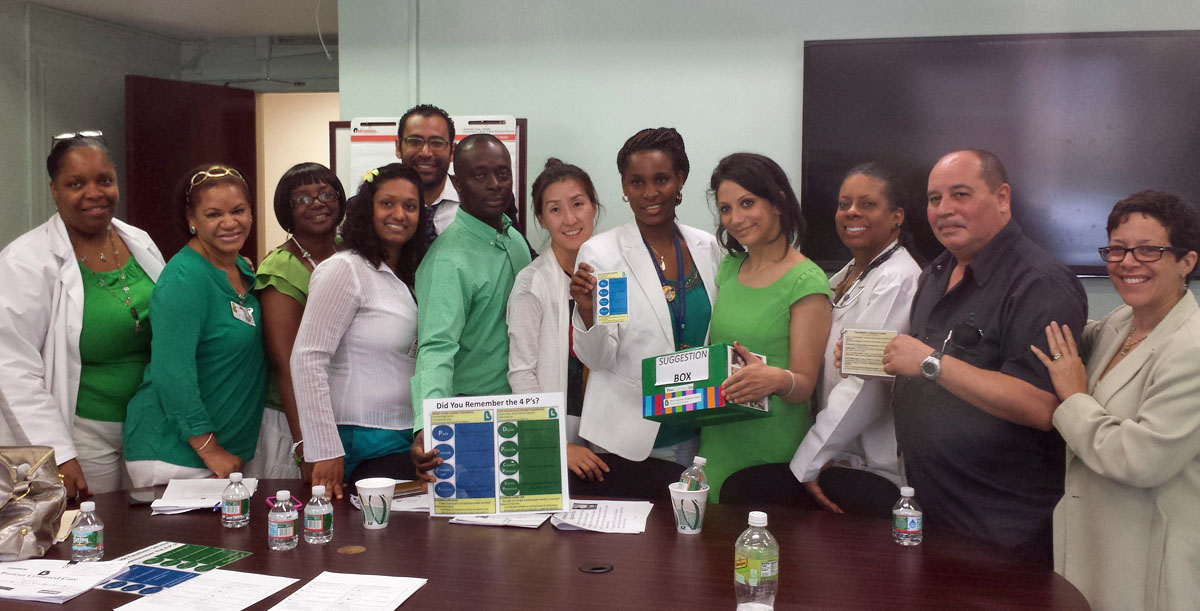“The experience has given everyone on the team a sense of the importance of our roles in patient care, and the confidence to express ourselves in front of leadership for the betterment of our patients without hesitation. It was especially motivating to see how working to improve our service to each other has improved our service to patients,” writes Preeti Jadhav, MD, in Patient Safety and Quality Healthcare. Dr. Jadhav’s article, which was published on December 8, describes the Labor Management Project’s work with staff on the 15th floor of Bronx-Lebanon Hospital to improve staff responsiveness to patients’ needs. The quality improvement initiative was part of the LMP’s Patient-Centered Care project.
Dr. Jadhav, who participated in the initiative as part of her postgraduate residency, was initially excited by the opportunity to improve patient care, but became wary when she learned that the project was sponsored by the hospital’s top administrators, and that some of them were on the quality improvement team. She wondered if the other team members would feel free to speak truthfully in front of the top brass. But that fear was soon put to rest.
“To my surprise, we all just started speaking up,” she writes. At LMP-facilitated meetings, the team members learned about each other’s struggles and contributions. “Originally, I had thought my team [in the hospital] consisted of my coresidents and attendings [physicians],” she writes. “The multidisciplinary intervention made me realize the nurses, PCTs, social workers, unit associates, patient transporters, and housekeepers were equally important team members. The project was a forum where we got to know our fellow teammates better, and it reinforced our desire to make a better work environment for ourselves and a better healing environment for our patients.”
The quality improvement team decided to focus on reducing the number of call bells, since patients whose needs were being met would not feel the need to press the call button. They then implemented and reinforced new systems aimed at helping staff respond more proactively to patients’ needs. Working together to improve patient care also brought the staff closer to one another. Monthly unit orientations to bring new staff up to speed on the project, for instance, “reinforced project objectives for the team and gave house staff a warm welcome to the 15th floor,” writes Dr. Jadhav.
The project, she reports, resulted in an 85% decrease in call bells. The unit’s HCAHPS scores also improved, rising from an all-time low of 8% for “Always got call button help as soon as I wanted it” to an all-time high of 95%. In addition, a survey question regarding “mutual respect” among staff members shifted from an all-time low of 6% to an all-time high of 64%, illustrating how much staff members’ treatment of one another improved during the project.
Learn More
The Labor Management Project’s write-up of the project.
The article in Patient Safety and Quality Healthcare.
